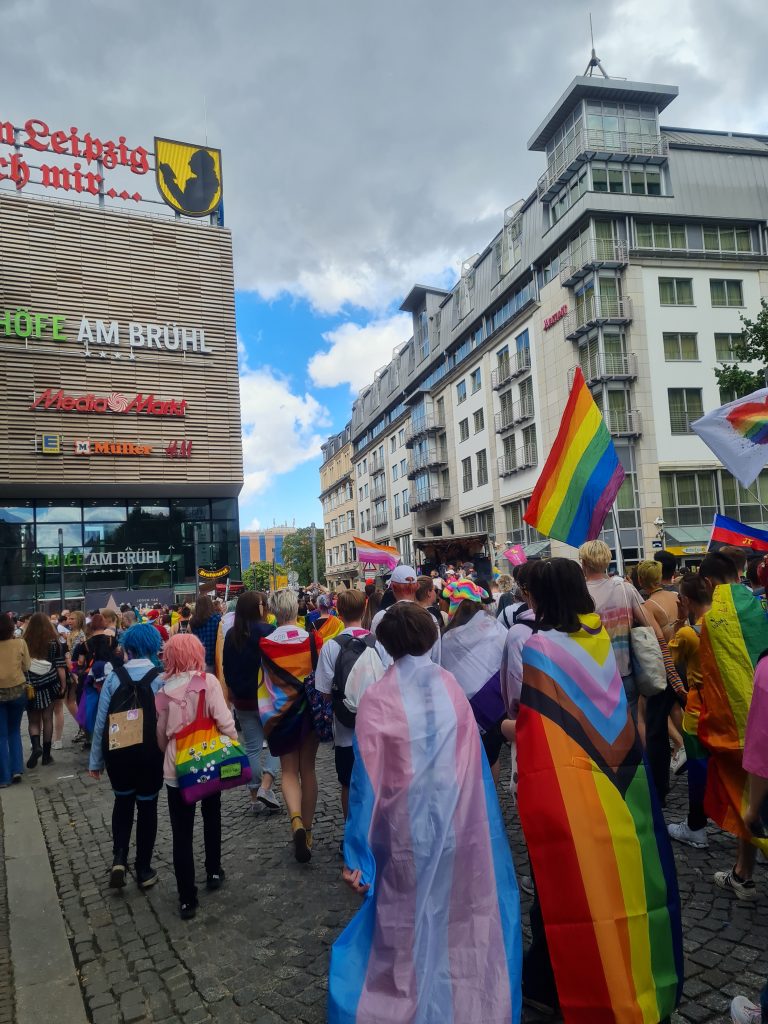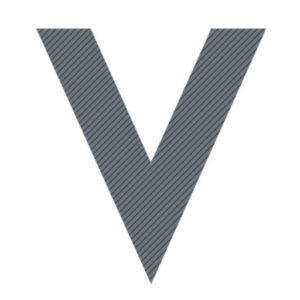He/him, she/her, they/them, xie/xiem… pronouns can be a confusing thing, especially nowadays on social media. But they’re important, especially for normalizing the representation of so far underrepresented gender identities. In this article Vanessa takes a look at non-binary gender identity.
Since 1969 people all over the world have come together every year in the month of June to celebrate pride month. With peaceful gatherings such as the Christopher Street Day (CSD) and volunteer organizations such as the LGBT or Pride Foundation, awareness of the meaning of the month of June for people of the LGBTQIA+ community has risen. Pride Month has its origins in the Stonewall Uprising in Manhattan in 1969 which had an important impact on the Gay Liberation Movement in the United States of America1. The events held during that month serve as a way to raise awareness of hate crimes against members of the LGBTQIA+ community and human rights that should be applicable to each and every human being no matter their gender, sexuality, religious identity, race, etc.
Pride month has just started, so you may have noticed that celebrations (especially the CSD) are beginning to be held in several cities across Germany (e.g. Cologne, Berlin and Leipzig). If you’re interested in going you can check out this list for further dates and cities.

I now want to talk about LGBTQIA+ identities that are often overlooked – especially in television or movies. Yes, we do get more and more characters that are LGBTQIA+, but they mostly portray side characters, supporting characters for the lead (such as the stereotypical gay best friend who helps the main character find their true love and so on) and/or characters that are not necessarily relevant to the plot.
Before we start discussing non-binary identity in modern television, however, let’s take a look at what non-binary actually means. According to the LGBT Foundation, non-binary is a term used to describe people who “feel their gender identity cannot be defined within the margins of gender binary. Instead, they understand their gender in a way that goes beyond simply identifying as either a man or a woman.”
Basically, what that means is that people who identify as non-binary include everyone who doesn’t fit the traditional and stereotypical view on binary gender roles, aka male and female. That makes the non-binary community very broad and diverse.
It’s important to understand that the terms gender and sex are two different things. Sex is the biological term used to describe the genitals someone is born with, whereas gender refers to the sense of self. To narrow it down, gender is used to describe your sense of who you really are, so whether someone feels male, female, both, fluid, or none of them all. This knowledge is also important to understand the concept of non-binary identity. Non-binary identity refers to the gender a person identifies with, not necessarily the biological sex they are born with. People who identify as non-binary oftentimes identify as male and female, with no gender at all or feel fluid. The LGBT Foundation states that non-binary identity is now similar to an umbrella term and encompasses people who identify as „genderqueer, genderf*ck, neutrosis, agender, gender-fluid, bigender and third gender“2. Those are just a few examples of just how diverse and broad the non-binary spectrum is.
Similar to the still ongoing debate about gender neutral language, non-binary people face the struggle to be acknowledged and addressed with their correct pronouns. In the English language the pronouns „they/them“ are oftentimes used, along with „Mx“, a gender-neutral form of Mrs. and Mr. Some non-binary people might also use pronouns like „he“, „she“, „they“, „he“, „xe“, „xie“, „xiem“ and others3. However, in the end it comes down to each and every individual to define their identity and choose their own pronouns. Awareness for pronouns in this regard is also important because being addressed by the wrong gender or with the wrong pronouns is still a daily occurrence for people who don‘t identify with the gender binary.
In this regard, some of you may have already noticed that some people on social media have started to put their preferred pronouns in their bios or descriptions. This is a good way to raise awareness and normalize the fact that gender does not only include the binary gender roles but is so much more than just that. This is also why it is so important that people who identify on the cis spectrum (or as cisgender) also participate in practices like that.
Furthermore, it normalizes asking for peoples‘ pronouns before addressing someone and/or sharing one‘s pronouns. The most important thing however, is to never assume someone‘s pronouns or gender identity in general or based on their looks. Yes, a lot of people use he/him and she/her pronouns but there are still those who don‘t. One of the safest options is always to simply ask the other person about their pronouns, especially if you aren’t sure or don‘t know them; and don‘t forget to share your own pronouns as well4.
Another interesting debate regarding this matter is the normalization of unisex and gender neutral bathrooms. Opinions about this topic range from opposing to approving and supporting the installation of said bathrooms. Luc Bovens and Alexandru Marcoci for example wrote an article in the Guardian, stating that unisex bathrooms have several advantages such as cutting the waiting for women and addressing the concerns of people who don’t identify on the binary gender spectrum. At the same time there are articles that consider both the pros and cons of unisex bathrooms and articles about decisions against gender neutral bathrooms.
This debate is probably one that will go on for a long time, especially as current bathroom options (at least for most public spaces) aren’t gender inclusive and thus discriminate against people on the non-binary-spectrum. Mostly, the reason for not establishing gender neutral bathrooms seems to be either fear of change, old stereotypes, or the alleged protection of women (which of course should be taken seriously). However, there already are a few good examples of gender neutral bathrooms that have proven to be working just fine.
Denmark is one of the countries that has established a lot of unisex bathrooms in public. When I spent a semester abroad at Roskilde Universitet, I saw them for myself and got to experience the overall “feeling” of unisex bathrooms first hand. The bathrooms there usually don’t have urinals but enough stalls. A lot of restaurants and public spaces in Denmark also use the unisex bathroom principle and it seems to work just fine with the bonus that now no gender identity is discriminated against. As I’m not the only one who made this observation, there are also other people who shared their experiences with unisex bathrooms in Nordic countries via blog posts.
But there are also some German places who deployed gender neutral bathrooms. The vegan cafe and deli Katers Köök in Hamburg, for example, is one of them, and they even include a normal stall and a urinal in their bathroom. Generally, it is important to look at the possibility of establishing gender neutral bathrooms because – even though it might seem like only a small aspect of everyday life – it can have a big impact on people‘s well being.
When talking about non-binary identity, it is also necessary to look at recent developments in the United States of America and their passing of laws and bills that severely impact the life‘s and health of trans and non-binary people – and especially children and young adults. In the US 21 states passed bills that forbid transgender youth to participate in sports consistent with their gender identity. According to a New York Times article, ten states have passed laws that prohibit transgender people from receiving gender-affirming care, specifically banning the use of medication and hormones and even therapy. This wave of anti-trans laws happened only within three months. In Germany, the CSU recently demanded to forbid a reading by drag queens for children. Considering these current developments (especially in the US) it seems all the more important to celebrate the CSD and pride month.
By Vanessa Pohl
Pictures taken by Vanessa Pohl
References
1Library of Congress (n.D.). Lesbian, Gay, Bisexual, Transgender and Queer Pride Month. https://www.loc.gov/lgbt-pride-month/about/
2LGBT Foundation (n. D.). Non-binary inclusion. https://lgbt.foundation/who-we-help/trans-people/non-binary
3Diversity Center (n.D.). Pronouns: A How-To. https://www.diversitycenterneo.org/about-us/pronouns/
4Diversity Center (n.D.). Pronouns: A How-To. https://www.diversitycenterneo.org/about-us/pronouns/
5Movement Advancement Project | Bans on Transgender Youth Participation in Sports (lgbtmap.org)
6Bans on Transition Care for Young People Spread Across U.S. – The New York Times (nytimes.com)
